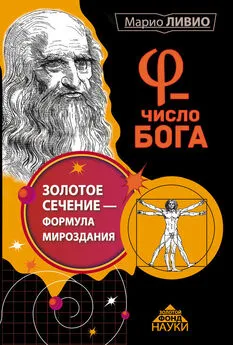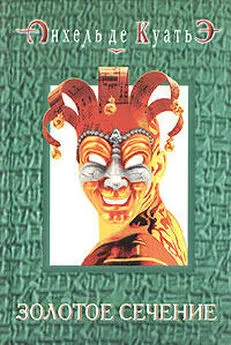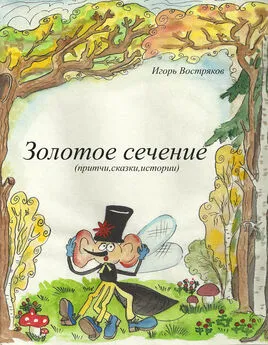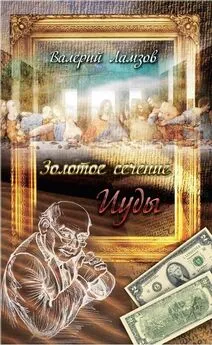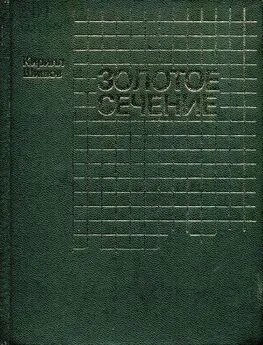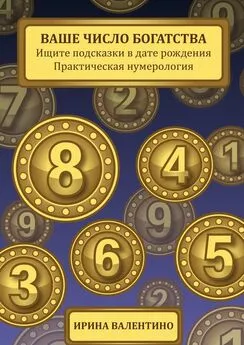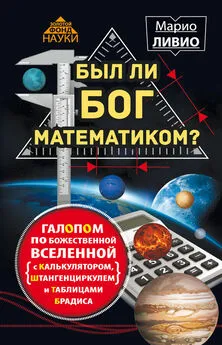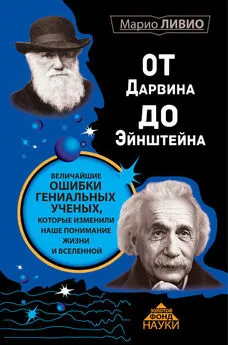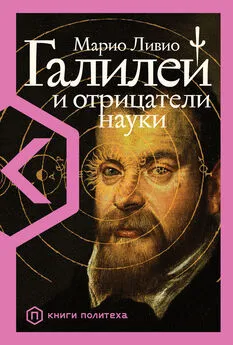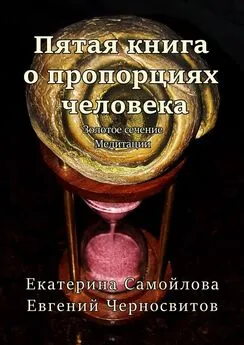Марио Ливио - φ – Число Бога. Золотое сечение – формула мироздания
- Название:φ – Число Бога. Золотое сечение – формула мироздания
- Автор:
- Жанр:
- Издательство:Литагент «АСТ»c9a05514-1ce6-11e2-86b3-b737ee03444a
- Год:2015
- Город:Москва
- ISBN:978-5-17-094497-2
- Рейтинг:
- Избранное:Добавить в избранное
-
Отзывы:
-
Ваша оценка:
Марио Ливио - φ – Число Бога. Золотое сечение – формула мироздания краткое содержание
Как только не называли это загадочное число, которое математики обозначают буквой φ: и золотым сечением, и числом Бога, и божественной пропорцией. Оно играет важнейшую роль и в геометрии живой природы, и в творениях человека, его закладывают в основу произведений живописи, скульптуры и архитектуры, мало того – ему посвящают приключенческие романы! Но заслужена ли подобная слава? Что здесь правда, а что не совсем, какова история Золотого сечения в науке и культуре, и чем вызван такой интерес к простому геометрическому соотношению, решил выяснить известный американский астрофизик и популяризатор науки Марио Ливио. Увлекательное расследование привело к неожиданным результатам…
Увлекательный сюжет и нетривиальная развязка, убедительная логика и независимость суждений, малоизвестные факты из истории науки и неожиданные сопоставления – вот что делает эту научно-популярную книгу настоящим детективом и несомненным бестселлером.
φ – Число Бога. Золотое сечение – формула мироздания - читать онлайн бесплатно ознакомительный отрывок
Интервал:
Закладка:
Рекомендуемая литература
Только пустые, ограниченные люди не судят по внешности. Подлинная тайна жизни заключена в зримом, а не в сокровенном…
О. Уайлд (1854–1900) ( Пер. М. Абкина )Большинство книг и статей из этого списка – популярные, а не специальные. Те немногие, которые можно отнести к специальной литературе, отобраны за какие-то особые качества. Кроме того, я отобрал несколько веб-сайтов, где можно найти интересный материал.
Ackermann, F. “The Golden Section”, Mathematical Monthly, 2 (1895): 260–264.
Dunlap, R. A. The Golden Ratio and Fibonacci Numbers. Singapore: World Scientific, 1997.
Fowler, D. H. “A Generalization of the Golden Section”, Fibonacci Quarterly, 20 (1982): 146–158.
Gardner, M. The Second Scientific American Book of Mathematical Puzzles & Diversions. Chicago: University of Chicago Press, 1987.
Ghyka, M. The Geometry of Art and Life. New York: Dover Publications, 1977.
Grattan-Guinness, I. The Norton History of the Mathematical Sciences. New York: W. W. Norton & Company, 1997.
Herz-Fischler, R. A Mathematical History of the Golden Number. Mineola, NY: Dover Publications, 1998.
Hoffer, W. “A Magic Ratio Occurs Throughout Art and Nature”, Smithsonian (December 1975): 110–120.
Hoggatt, V. E., Jr. “Number Theory: The Fibonacci Sequence”, in Yearbook of Science and the Future. Chicago: Encyclopaedia Britannica, 1977, 178–191.
Huntley, H. E. The Divine Proportion. New York: Dover Publications, 1970.
Knott, R. http://www.mcs.surrey.ac.uk/Personal/ R. Knott/Fibonacci/fib.html.
Knott, R. http://www.mcs.surrey.ac.uk/Personal/ R. Knott/Fibonacci/fibnet2.html.
Markowski, G. “Misconceptions about the Golden Ratio”, College Mathematics Journal, 23 (1992): 2–19.
Ohm, M. Die reine Elementar-Mathematik. Berlin: Jonas Veilags-Buchhandlung, 1835.
Runion, G. E. The Golden Section. Palo Alto: Dale Seymour Publications, 1990.
http://search.britannica.com/search?query=fibonacci.
Barrow, J. D. Pi in the Sky. Boston: Little, Brown and Company, 1992.
Beckmann, P. A History of π. Boulder, CO: Golem Press, 1977.
Boulger, W. “Pythagoras Meets Fibonacci”, Mathematics Teacher, 82 (1989): 277–282.
Boyer, C. B. A History of Mathematics. New York: John Wiley & Sons, 1991.
Burkert, W. Lore and Science in Ancient Pythagoreanism. Cambridge, MA: Harvard University Press, 1972.
Conway, J. H., and Guy, R. K. The Book of Numbers. New York: Copernicus, 1996.
Dantzig, T. Number: The Language of Science. New York: The Free Press, 1954.
de la Füye, A. Le Pentagramme Pythagoricien, Sa Diffusion, Son Emploi dans le Syllaboire Cuneiform. Paris: Geuthner, 1934.
Guthrie, K. S. The Pythagorean Sourcebook and Library. Grand Rapids, MI: Phanes Press, 1988.
lfrah, G. The Universal History of Numbers. New York: John Wiley & Sons, 2000.
Maor, E. e: The Story of a Number. Princeton, NJ: Princeton University Press, 1994.
Paulos, J. A. Innumeracy. New York: Vintage Books, 1988.
Pickover, C. A. Wonders of Numbers. Oxford: Oxford University Press, 2001.
Schimmel, A. The Mystery of Numbers. Oxford: Oxford University Press, 1994.
Schmandt-Besserat, D. “The Earliest Precursor of Writing”, Scientific American (June 1978): 38–47.
Schmandt-Besserat, D. “Reckoning Before Writing”, Archaeology, 32–33 (1979): 22–31.
Singh, S. Fermat’s Enigma. New York: Anchor Books, 1997.
Stanley, T. Pythagoras. Los Angeles: The Philosophical Research Society, 1970.
Strohmeier, J., and Westbrook, P. Divine Harmony. Berkeley, CA: Berkeley Hills Books, 1999.
Turnbull, H. W. The Great Mathematicians. New York: Barnes & Noble, 1993.
von Fritz, K. “The Discovery of Incommensurability of Hipposus of Metapontum”.
Annals of Mathematics, 46 (1945): 242–264.
Wells, D. Curious and Interesting Numbers. London: Penguin Books, 1986.
Wells, D. Curious and Interesting Mathematics. London: Penguin Books, 1997.
Beard, R. S. “The Fibonacci Drawing Board Design of the Great Pyramid of Gizeh”, Fibonacci Quarterly, 6 (1968): 85–87.
Burton, D. M. The History of Mathematics: An Introduction. Boston: Allyn and Bacon, 1985.
Doczi, O. The Power of Limits. Boston: Shambhala, 1981.
Fischler, R. “Théories Mathématiques de la Grande Pyramide”, Crux Mathematicorum, 4 (1978): 122–129.
Fischler, R. “What Did Herodotus Really Say? or How to Build (a Theory of) the Great Pyramid”, Environment and Planning B, 6 (1979): 89–93.
Gardner, M. Fads and Fallacies in the Name of Science. New York: Dover Publications, 1957.
Gazalé, M. J. Gnomon. Princeton, NJ: Princeton University Press, 1999.
Gillings, R. J. Mathematics in the Time of the Pharaohs. New York: Dover Publications, 1972.
Goff, B. Symbols of Prehistoric Mesopotamia. New Haven, CT: Yale University Press, 1963.
Hedian, H. “The Golden Section and the Artist”, Fibonacci Quarterly, 14 (1976): 406–418.
Lawlor, R. Sacred Geometry. London: Thames and Hudson, 1982.
Mendelssohn, K. The Riddle of the Pyramids. New York: Praeger Publishers, 1974.
Petrie, W. The Pyramids and Temples of Gizeh. London: Field and Tuer, 1883.
Piazzi Smyth, C. The Great Pyramid. New York: Gramercy Books, 1978.
Schneider, M. S. A Beginner’s Guide to Constructing the Universe. New York: Harper Perennial, 1995.
Spence, K. “Ancient Egyptian Chronology and the Astronomical Orientation of the Pyramids”, Nature, 408 (2000): 320–324.
Stewart, I. “Counting the Pyramid Builders”, Scientific American (September 1998): 98–100.
Verheyen, H. F. “The Icosahedral Design of the Great Pyramid”, in Fivefold Symmetry.
Singapore: World Scientific, 1992, 333–360.
Wier, S. K. “Insights from Geometry and Physics into the Construction of Egyptian
Old Kingdom Pyramids”, Cambridge Archaeological Journal, 6 (1996): 150–163.
Borissavlievitch, M. The Golden Number and the Scientific Aesthetics of Architecture. London: Alec Tiranti, 1958.
Bruckman, P. S. “Constantly Mean”, «Fibonacci Quarterly», 15 (1977): 236.
Coxeter, H. S. M. Introduction to Geometry. New York: John Wiley & Sons, 1963.
Cromwell, P. R. Polyhedra. Cambridge: Cambridge University Press, 1997.
Dixon, K. Mathographics. New York: Dover Publications, 1987.
Ghyka, M. L’Esthetique des proportions dans la nature et dans les arts. Paris: Gallimard, 1927.
Heath, T. A History of Greek Mathematics. New York: Dover Publications, 1981.
Heath, T. The Thirteen Books of Euclid’s Elements. New York: Dover Publications, 1956.
Jowett, B. The Dialogues of Plato. Oxford: Oxford University Press, 1953.
Kraut, R. The Cambridge Companion to Plato. Cambridge: Cambridge University Press, 1992.
Lasserre, F. The Birth of Mathematics in the Age of Plato. London: Hutchinson, 1964.
Pappas, T. The Joy of Mathematics. San Carlos, CA: Wide World Publishing, 1989.
Trachtenberg, M., and Hyman, I. Architecture: From Prehistory to Post Modernism/The
Western Tradition. New York: Harry N. Abrams, 1986.
Zeising, A. Der goldener Schnitt. Halle: Druck von E. Blochmann & Son in Dresden, 1884.
http://cedar.evansville.edu/~ck6/index.html.
Adler, I., Barabe, D., and Jean, R. V. “A History of the Study of Phyllotaxis”, Annals of Botany, 80 (1997): 231–244.
Basin, S. L. “The Fibonacci Sequence as It Appears in Nature”, Fibonacci Quarterly, 1 (1963): 53–64.
Brousseau, Brother A. An Introduction to Fibonacci Discovery. Aurora, SD: The Fibonacci Association, 1965.
Bruckman, P. S. “Constantly Mean”, Fibonacci Quarterly, 15 (1977): 236.
Coxeter, H. S. M. “The Golden Section, Phyllotaxis, and Wythoff’s Game”, Scripta Mathematica, 19 (1953): 135–143.
Coxeter, H. S. M. Introduction to Geometry. New York: John Wiley & Sons, 1963.
Cook, T. A. The Curves of Life. New York: Dover Publications, 1979.
Devlin, K. Mathematics. New York: Columbia University Press, 1999.
Douady, S., and Couder, Y. “Phyllotaxis as a Physical Self-Organized Process”, Physical
Review Letters, 68 (1992): 2098–2101.
Dunlap, R. A. The Golden Ratio and Fibonacci Numbers. Singapore: World Scientific, 1997.
Fibonacci, L. P. The Book of Squares. Orlando, FL: Academic Press, 1987.
“The Fibonacci Numbers”, Time, April 4, 1969, 49–50.
Gardner, M. Mathematical Circus. New York: Alfred A. Knopf, 1979.
Gardner, M. “The Multiple Fascination of the Fibonacci Sequence”, Scientific American (March 1969): 116–120.
Garland, T. H. Fascinating Fibonaccis. White Plains, NY: Dale Seymour Publications, 1987.
Gies, J., and Gies, F. Leonard of Pisa and the New Mathematics of the Middle Ages. New
York: Thomas Y. Crowell Company, 1969.
Hoggatt, V. E. Jr. “Number Theory: The Fibonacci Sequence”, Chicago: Encyclopaedia
Britannica, Yearbook of Science and the Future, 1977, 178–191.
Hoggatt, V. E. Jr., and Bicknell-Johnson, M. “Reflections Across Two and Three Glass Plates”, Fibonacci Quarterly, 17 (1979): 118–142.
Horadam, A. F. “Eight Hundred Years Young”, The Australian Mathematics Teacher, 31 (1975): 123–134.
Jean, R. V. Mathematical Approach to Pattern and Form in Plant Growth. New York: John Wiley & Sons, 1984.
O’Connor, J. J. and Robertson, E. F. www-history.mcs.st-andrews.ac.uk/history/Mathematicians/Fibonacci.html.
Pickover, C. A. Keys to Infinity. New York: John Wiley & Sons, 1995.
Rivier, N., Occelli, R., Pantaloni, J., and Lissowdki, A. “Structure of Binard Convection”.
Cells, Phyllotaxis and Crystallography in Cylindrical Symmetry”, Journal Physique, 45 (1984): 49–63.
Singh, P. “The So-Called Fibonacci Numbers in Ancient and Medieval India”, Historia Mathematica, 12 (1985): 229–244.
Smith, D. E. History of Mathematics. New York: Dover Publications, 1958.
Stewart, I. “Fibonacci Forgeries”, Scientific American (May 1995): 102–105.
Читать дальшеИнтервал:
Закладка:
